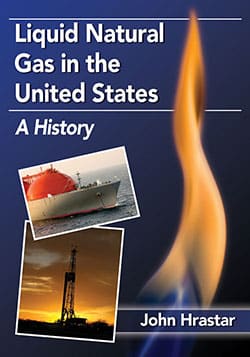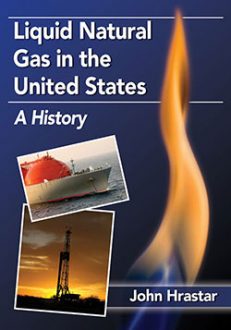Liquid Natural Gas in the United States
A History
$39.95
In stock
About the Book
When natural gas was first discovered in Appalachia in the 19th century, its development as a fuel was rapid. Unlike oil and coal, gas could be moved only by pipeline and required large containers for storage. It was not possible to cope with peak loads without adding excessive pipeline capacity until just before World War II, when two sister gas companies developed a plant to liquefy and store natural gas as a liquid; the liquid was then regasified to deal with peak loads.
The liquid is 1/600 the volume of the gas, but it requires storage at an extremely low temperature, 1-260°F. This worked well until 1944, when a liquid natural gas (LNG) tank in Cleveland ruptured and caused a fire with 130 fatalities. The fire did not end the industry but caused it to pause. Over the next few years the problems in materials, design, standards, and siting were solved. The recognition that liquefaction made LNG transportable without a pipeline was the breakthrough. In 1959 a shipload of LNG went from Louisiana to Britain and restarted the LNG industry. It is now a major worldwide energy industry and the topic of this work.
About the Author(s)
Bibliographic Details
John Hrastar
Format: softcover (7 x 10)
Pages: 288
Bibliographic Info: 61 photos, notes, bibliography, index
Copyright Date: 2014
pISBN: 978-0-7864-7859-0
eISBN: 978-1-4766-1509-7
Imprint: McFarland
Table of Contents
Table of Contents
Acknowledgments vi
Preface 1
Introduction 3
1—Inferno 9
2—Discovery and Growth 25
3—Growth to Shortage 48
4—Discovery of Gas Liquefaction 78
5—Liquid Storage 105
6—Setback 140
7—Recovery 178
8—Breakout: Moving the Energy 216
Chapter Notes 249
Selected Bibliography 263
Index 271
Book Reviews & Awards
“enlightening, informative…highly recommended”—Choice.





